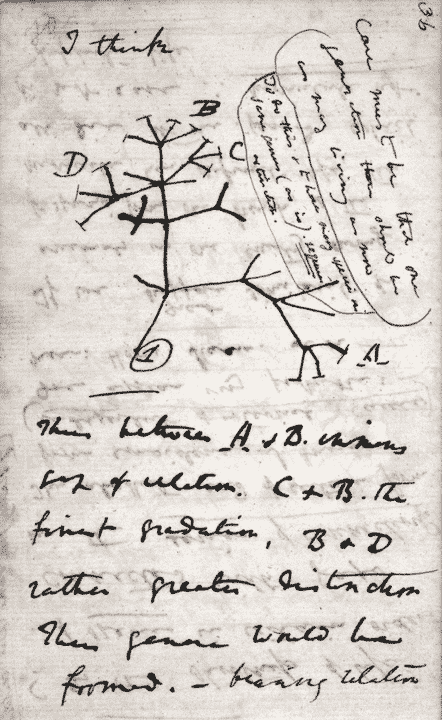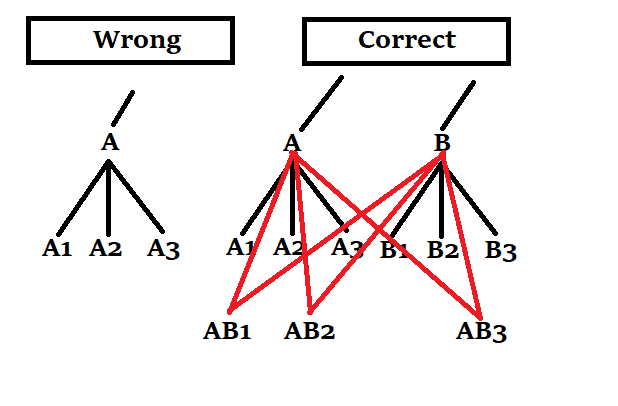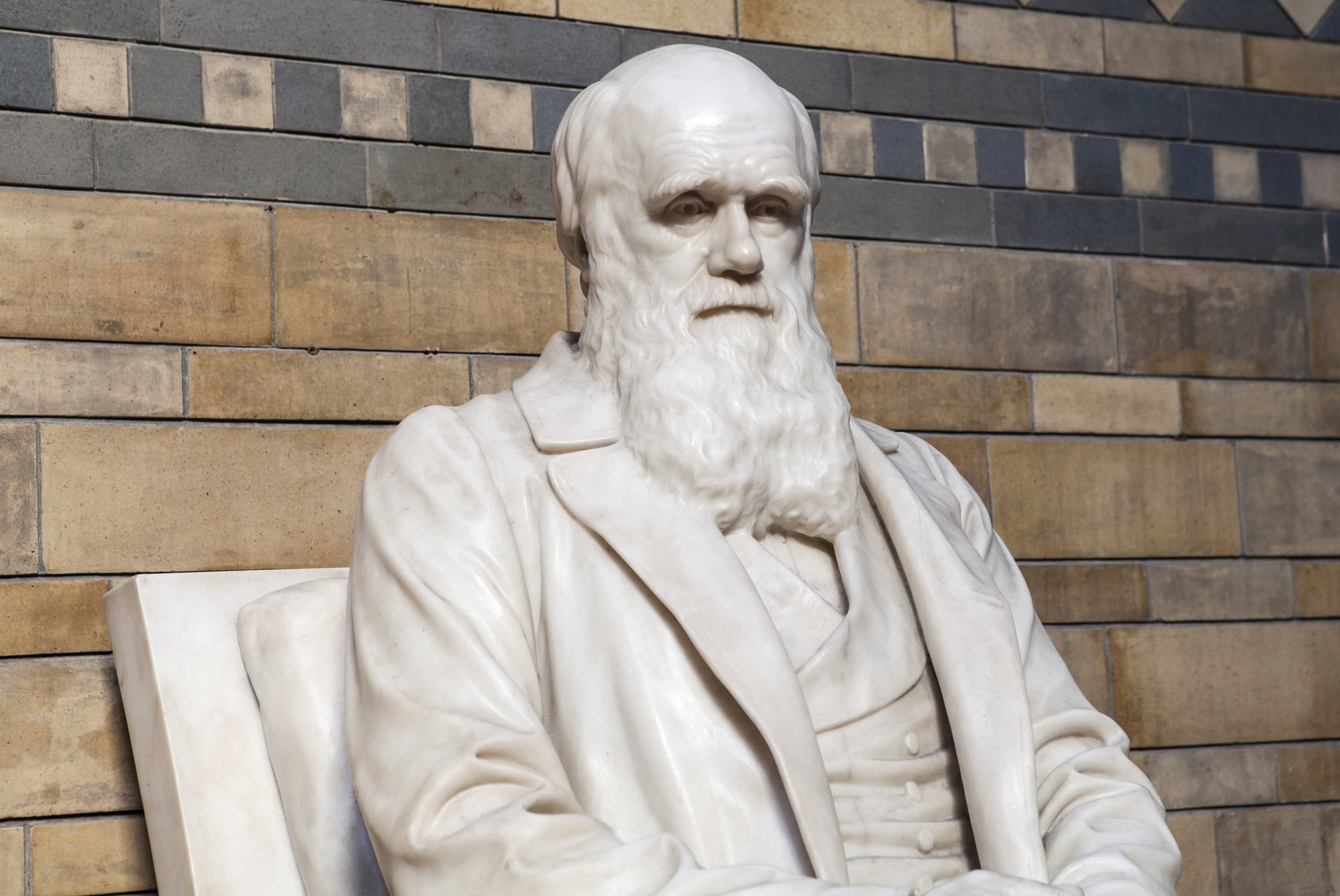The year was 1836. Charles Darwin had just returned home after spending five years on the HMS Beagle expedition. By then, John Stevens Henslow, Darwin's botany professor, had already published the geological letters Darwin had sent him during his voyage as a pamphlet and sent it to famous naturalists in England. Moreover, the fossils and the plant, animal, and bird specimens Darwin had brought with him from his voyage, proved highly useful for zoologists. As a result, when he was just 27 years old, Darwin became famous among the scientific community in England.
But Darwin's accomplishments did not stop there. After all, Darwin wasn't satisfied with being the one who helped formulate the most accepted theory of evolution. He wanted to be the one who formulated it. So, he set himself up on the mission to find out how evolution happens.
The result of this mission was the Theory of Natural Selection and several other theories. In this blog post, we look at these theories of Darwin and find out which were correct and which weren't.
Darwin's theories that are considered correct
Theory of Natural Selection
According to Darwin, Natural Selection happens due to variations that occur in some individuals of a species. If these variations are favorable and help the individuals survive until they reproduce, their variations are passed on to the next generation. If they are not favorable, then these individuals don't get to reproduce, and hence, their variations are not passed on to the next generation. Thus, favorable variations are passed down to successive generations, whereas unfavorable variations die out. This mechanism forms the basis of evolution. According to Darwin, two processes may happen as a result of natural selection.
Anagenesis
If a species keeps evolving continuously as a result of the favorable variations that occur in some individuals, then, after several hundreds or thousands of generations, the resulting species might be completely different from the original species. By that time, the original species would have completely disappeared. Darwin calls this process where one species completely replaces another species Anagenesis. In this process, the original species produces only one new species and does not branch out.
Speciation
A variation of the concept of Anagenesis is Speciation. While in Anagenesis, only one new species is formed by replacing the original species, in Speciation, many new species can be formed by replacing the original species, which may differ from each other significantly. This happens in species, where some populations migrate to areas with weather conditions that are different from their home region.
The populations that migrate might face different environmental conditions and survival threats. If these populations stay there in isolation from the original species and breed among themselves, then, after many generations, they may evolve differently when compared to the population that stayed back.
For example, if a population migrated to a warmer environment, individuals in that population might develop body features to survive in hot climates. On the other hand, the population that migrated to a colder environment might evolve to survive in colder climates. So, after hundreds or thousands of generations, these populations would have evolved so differently when compared to each other that they couldn't breed with members of the other population anymore. So, they need to be classified as a new species altogether.
Evidences to support Darwin's theories
Natural Selection was a revolutionary concept. Darwin knew that it would take the world by surprise. By postulating that species evolve into completely different species over time, he would be implying that humans evolved from animals too. It would upset many religious heads because it would go against their core belief that God created humans. So, providing convincing evidence to back his theory of evolution became important for Darwin. Therefore, he spent almost two decades gathering evidence for it.
But the time Darwin spent gathering evidence did not go to waste. When he finally published the 490-page abstract called 'On the Origin of Species,' he could quote examples from several fields, like paleontology, embryology, etc., as evidence to support his theory. Are you curious to find out what these pieces of evidence are? Then, keep reading.
Bio-geography (The geographical distribution of plants and animals)
One of the pieces of evidence that Darwin mentions in his books is the co-occurrence of several species of Galapagos Finches. Several species of these birds are found in the Galapagos, the group of isolated islands in the pacific ocean. The similarities between them suggest that they might have originated from a bird species in Central or South America, then migrated to these isolated islands, where they could have evolved into different species.
Embryology
Another example Darwin mentions in his books is the similarity between embryos. Darwin notes that during the initial stages of formation, the embryos of more evolved organisms like birds, animals, fishes, etc., appear similar to those of more primitive life-forms.
Taxonomy (The classification of life-forms)
Using the observable traits that organisms possess, biologists decide which organisms to group into the same family, species, etc. Darwin used the same technique to find out how evolution happened. He compared the traits of the life forms that existed during his time with those of fossils. Then, he deducted that the more similar traits a life form and a fossil shared, the closer they are linked through evolution.
The proofs we have now
Today, Darwin's theory of evolution is widely accepted. The numerous fossils we have found over the ages serve as testimony to the correctness of his theory. By determining the age of the rocks in which these fossils are found, scientists are able to affirm one thing - The fossils of simple organisms are found in very old rocks, while the fossils of complex life forms are found in newer rocks. This proves that Darwin was correct in thinking that complex organisms evolved from simple organisms.
Darwin's theories that are considered wrong
Thus, as you can see, Darwin provided convincing evidence to back his theory of evolution. Yet, many people didn't accept it because there was a missing link in his theory. Even though Darwin postulated that evolution happened due to the variations that occur in individuals, he couldn't say why it happened. And in his attempt to explain why these variations occurred, Darwin postulated a theory, which turned out to be very wrong.
Pangenesis
Darwin lived at a time when genetics wasn't invented. So, to explain the missing link in his theory, Darwin proposed the theory of Pangenesis.
Darwin's theory
According to this theory, the cells in our bodies shed super-tiny particles called Gemmules. When provided with the proper nutrition, these particles can grow into the cells from which they were shed. These Gemmules are dispersed throughout our bodies. The sexual organs collect gemmules from all parts of the body.
So, when individuals of opposite sexes copulate, Gemmules from both individuals mix. If the Gemmules from a body part of one parent has superior numbers, the corresponding features of the resulting offspring resemble that parent. When an offspring develops inside its mother, Gemmules must grow and attach to one another in the proper amount and right order for the baby to be born healthy. If that doesn't happen, the baby may be born with congenital disabilities.
Darwin's Pangenesis initially helped explain why children born to the same parents differ from each other. It also helped explain why children inherit features from parents, like hair color and diseases.
Darwin's theory and Lamarck's theory
But Darwin's Theory of Pangenesis doesn't end there. It also states that when a parent's organ changes as a result of its behavioral changes, its Gemmules could be altered. These Gemmules could multiply and replace the old Gemmules. When these Gemmules are inherited by its offspring, their organs, too, are altered. The driving force behind this aspect of Darwin's Pangenesis was Lamarck's Theory of Acquired Characteristics. Lamarck's theory of Acquired Characteristics states that when an organism changes its behavior in response to the environment, its organs change as a result. These changes are then inherited by its offspring.
Problem with Lamarck's theory
Today, we know that Lamarck's theory is not correct. August Weismann disproved the theory using an experiment. He cut off the tails of rats for 22 generations. And yet, a tailless rat was never born.
We can also easily observe this in human beings. Even if a person works hard to build his body and runs marathons for several years, his children do not inherit these characteristics. They still need to work equally hard to achieve the same level of fitness.
Darwin tried to prove his theory through experiments. To prove Pangenesis, his cousin, Francis Galton, took the blood of a rabbit and injected it into another rabbit. If Darwin was right, then the offspring of the second rabbit should show the characteristics of the first rabbit. But that did not happen, and Darwin couldn't prove his theory.
Moreover, Lamarck's Theory of Acquired Characteristics was disproved several years later. And with it, Darwin's Theory of Pangenesis, too, was disproved.
The correct reason behind genetic variations
But we now know that evolution has nothing to do with Darwin's theory of Gemmules mixing together. It actually happens due to the genetic variations that occur in individuals. The cells in our bodies contain DNA, which contains genes from our parents. Every time a baby is formed, the genes of the parents mix together in a unique way. So, even siblings differ from each other significantly.
Moreover, when cells divide, they make copies of the DNA they contain. But this copying process is not always perfect. Sometimes, the copies of the DNA don't come out perfect, thereby introducing mutation. Every person probably has so many mutations in their body that they can't possibly keep track of.
These mutations and the genetic shuffling at birth create variations in individuals that make evolution possible.
Earth's age
During the time Darwin lived, most Europeans believed in Bible's statement that the earth was 6,000 years old. But Darwin did not think it was enough time for life to form and evolve to an intelligent life form. He believed that earth was definitely much older.
So, when a Scottish engineer called William Thomson proposed that the earth was 100 million years old, Darwin immediately embraced it. But Darwin's bet turned out to be wrong since we know now that the earth is more than 4.5 billion years old.
The Tree of Life
Another thing that Darwin got wrong was the Tree of Life. The Tree of Life is a diagram that Darwin drew in 1837, portraying evolution as a single tree branching and re-branching. Darwin might have been correct in thinking that complex organisms evolved from simple organisms. But his idea of evolution as being a single tree, where one big branch (Of course, each branch denotes a species) branches into several small branches, and each of these small branches then branches into even smaller branches, turned out to be wrong.

Charles Darwin's drawing of evolution as a single tree - By Charles Darwin - Page 36 of Notebook B: [Transmutation of species (1837-1838)]. 'commenced. . . July 1837'; from Darwin Online, Public Domain, Public Domain, Link
The correct way to depict evolution
Recent genetic tests on plants, animals, and bacteria reveal that several species frequently cross-breed with other species. This means that instead of genes being passed down from one big branch to several smaller branches beneath it in the same evolutionary path, they are also transferred between species on different evolutionary paths.
To make it easier to understand, Darwin thought that only individuals within a species (say A) breed with each other. So, when new species evolve from A (say A1, A2, A3), they contain genes from the individuals in species A. But in nature, individuals in species A breed with individuals from other species (say B) as well. So, the species that result from this cross-breeding (say AB1, AB2, AB3) will have genes from both species A and B.

An illustration showing the correct way to depict evolution (Left - Darwin's method, Right - Recent method)
Hence, instead of representing evolution as a tree, it would be more apt to represent it as a web.
